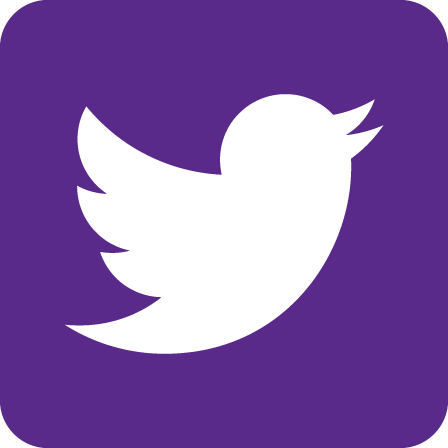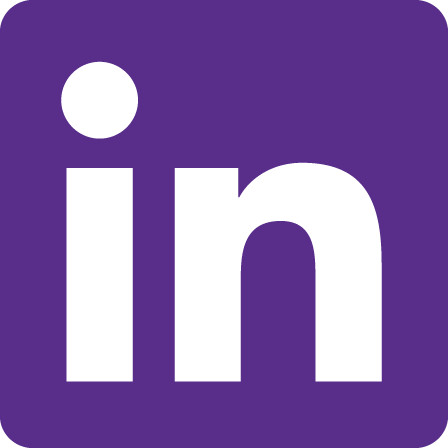Frequently Asked Questions
Have questions about innovation, creating and building new technologies on campus? We’re here to help. Read through our frequently asked questions to see if the Office of Innovation and New Ventures can help you.
What is the role of the Office of Licensing and Commercialization?
The Office of Licensing and Commercialization (L&C) is a resource for facilitating the transfer of academic knowledge and discovery to the public. Typically, the office evaluates new inventions, explores options for establishing intellectual property protection and seeks to license ECU inventions to industry partners. Other forms of exchange include professional collaborations, conference presentations, education and industry partnerships.
What assistance and resources are available from L&C?
L&C staff can assist inventors with the development and protection of new discoveries by identifying commercial partners, providing proof-of-concept funding and conducting patent searches and market analyses.
Why should I disclose my idea to L&C?
Disclosing your invention is an important step in the protection of your discovery and can lead to early collaboration with external commercial partners. Additionally, if government funds were used to conduct the research, a prompt disclosure to ECU must be filed which will be reported to the funding sponsor. Also, as a condition of employment or enrollment with ECU, employees and students have a duty to disclose inventions conceived, or conceived and reduced to practice, that have used university resources.
How do I know if my discovery is an invention?
Useful inventions typically have commercial potential or address a market or technical need. Contact L&C for assistance in determining whether your discovery fills a market or technical void.
When should I disclose my idea to L&C?
Contact L&C as soon as you believe you have a new and useful discovery, preferably prior to making a public presentation of your invention through publication of manuscripts, abstracts, posters, conference proceedings, funded grants or other communications. Premature public disclosure may have negative consequences on future patent filings, particularly in many foreign nations.
What is an invention pre-disclosure and an invention disclosure?
An invention pre-disclosure is an informal discussion with L&C staff about your invention and the conditions of its discovery. A pre-disclosure conversation will allow L&C to perform a patentability and market analysis and provide guidance on the formal disclosure process. A formal invention disclosure requires submission of a “Report of Invention” to L&C and is followed by review from ECU’s Patent Committee.
Should I disclose research tools such as plasmids, antibodies, cell lines, mice, etc.?
Yes, especially if these tools would benefit other researchers and third parties. Most research tools do not necessarily need to be protected by patents in order to be licensed to commercial parties. If you have research tools that you believe others would benefit from, then we will work with you to develop a licensing and distribution strategy.
What is conception?
Conception is the “formation in the mind of the inventor, of a definite and permanent idea of the complete and operative invention, as it is thereafter applied in practice.” (Amgen v. Chugai Pharmaceuticals).
If I jointly conceive an idea with a collaborator from another institution or company, what happens to the invention?
All individuals who contribute to conception of a patentable invention are inventors, regardless of where their employment or allegiances reside. However, ownership and licensing of an invention can depend on other factors such as written collaboration agreements between ECU and your collaborator’s employer. Typically, joint inventorship between inventors from different academic institutions and industry partners is easily handled with written interorganizational agreements.
What is intellectual property?
Intellectual property is an invention of the mind (books, materials, symbols, methods, etc.) protected by a set of exclusive rights corresponding to patent, copyright or trademark laws.
Why should my invention or idea be protected?
Intellectual property protection (patents, copyrights and trademarks) can provide economic incentive for the inventor, institution and company licensing an ECU invention. Protection also affords the right to exclude others from practicing the invention for a sufficient period of time to recoup the initial investment and develop early stage projects.
Is it important to establish intellectual property protection for successful commercialization of my invention?
Yes and no. Intellectual property is a valuable asset that when protected with patents, copyrights or trademarks can strengthen interest from potential industry partners. However, ECU can also license some inventions that do not have intellectual property protection.
Does ECU handle the protection of other forms of intellectual property such as copyright and trademark?
Yes. ECU can also assist in filing for copyright and trademark protection.
What happens if my invention is disclosed publicly?
If an invention is publicly disclosed, then foreign intellectual property rights will be severely limited, but intellectual property protection in the U.S. will still be available for a period of one year following first public disclosure.
How is a public disclosure defined?
A public disclosure includes printed publications and presentations, and sometimes oral disclosures, of an invention that is open to the general public, without the benefit of a confidential disclosure agreement.
Who is an inventor?
An inventor is an individual who has contributed to conception of one of more claims contained in an issued patent. Inventorship is a legal concept which is not open to independent interpretation. Either an individual contributed to conception of a patent claim or not.
My graduate student or research technician were very helpful in executing the experiments for my invention. Does that make them co-inventors?
Inventors are individuals who have contributed to conception of one or more of the claims contained in a patent. Simply following experimental protocol does not necessarily qualify a student or technician as an inventor, unless they have also contributed towards conception.
Who owns my invention?
ECU has an interest in all inventions of university personnel and students that are conceived, or conceived and first reduced to practice, as a result of university research, activities within the scope of employment and activities involving the use of university time, facilities, staff, materials information not available to the public or funds administered by the university.
If ECU doesn’t pursue protection of my invention, what happens next?
Upon approval of the Patent Committee, the Office of Innovation and New Ventures can release an invention to a university inventor, under terms of an invention release agreement.
What is an invention pre-disclosure and an invention disclosure?
An invention pre-disclosure is an informal discussion with L&C staff about your invention and the conditions of its discovery. A pre-disclosure conversation will allow L&C to provide perform a patentability and market analysis and provide guidance on the formal disclosure process. A formal invention disclosure requires submission of a Report of Invention to L&C and is followed by review from ECU’s Patent Committee.
How is a public disclosure defined?
A public disclosure includes printed publications and presentations, and sometimes oral disclosures of an invention that is open to the general public, without the benefit of a confidential disclosure agreement.
What is a public disclosure and how will it affect patenting of my invention?
One requirement for obtaining a patent is determining whether the invention is novel, but an invention cannot be considered novel if it has been publicly disclosed. For purposes of patent law, a public disclosure may be: a published article in a journal, magazine or newspaper; a presentation at a conference; a thesis or dissertation defense; distribution of pre-prints; posting information on the Internet; selling or offering to sell a product; public use of the invention; or a number of other events that tend to disclose knowledge to the public.
What happens if my invention is disclosed publicly?
If an invention is publicly disclosed, then foreign intellectual property rights will be severely limited, but intellectual property protection in the U.S. will still be available for a period of one year following first public disclosure.
Is my grant application considered a public disclosure?
Simply submitting a federal grant application is not considered a public disclosure, but award of a grant is considered a public disclosure because grant applications and subsequent technical reports are available to the general public upon request.
I described my invention during a public presentation last year. Can I still file a patent application?
U.S. patent law allows a one-year grace period from the time of first public disclosure to the time of filing of a U.S. patent application. However, most other nations allow little to no grace period from the time of first public disclosure, thus resulting in a loss of patent rights.
How can L&C further my research?
L&C facilitates development of research by fostering collaborations with government organizations, industry and private investors. New funds generated from these collaborations support education and can supplement federally sponsored research within the institution.
How are inventions handled when they result from federally sponsored research?
Under the Bayh-Dole Act, universities are allowed to retain ownership of federally sponsored inventions, provided the institution complies with certain federal requirements, such as annual reporting, substantial manufacture of in the U.S., sharing of income with inventors and provision of a royalty-free license for government use of the invention. Inventions resulting from the use of federally sponsored research should be disclosed to the Office of Innovation and New Ventures.
How are inventions handled when they result from privately sponsored research?
Research agreements with corporations often, but not always, contain two general conditions related to intellectual property. First, neither party may make a claim to any pre-existing intellectual property of the other party. Second, the industry partner is granted a first right of refusal to license any new inventions, under commercially reasonable terms.
Will obtaining a patent stop others from doing academic research?
Research for strictly academic purposes is typically encouraged by patent holders. However, patent holders do have the right to restrict the use of their patentable invention by others, even for research purposes. When in doubt, seek permission to use a patented product for your research. Most companies readily agree to share their materials with the research community under terms of a material transfer agreement.
Will I be able to share materials, research tools or other intellectual property with others to further their research?
Support of the research culture is important, but first carefully document conditions of shared use under terms of a materials transfer agreement.
What is a patent?
A patent confers the right to exclude others from making, using, offering for sale, selling or importing an invention without the consent of the inventor or assignee. This legal monopoly is only available in the country in which a patent is granted.
What is a utility patent application?
A utility patent offers protection to new and useful processes, methods, machines, compositions of matter or improvements thereof. Utility patent applications must meet requirements for novelty, utility and non-obviousness. U.S. utility patent applications will be prosecuted by a patent examiner from the U.S. Patent & Trademark Office.
What is a provisional application?
A provisional patent application establishes a priority date with the U.S. Patent & Trademark Office, but it does not elevate to the level of prosecution with a patent examiner. To take full advantage of the priority date established in a provisional patent application, a utility application must be filed within one year of filing a provisional application.
What discoveries are considered patentable?
An invention is patentable if it is a new and useful process, machine, manufacture, or composition of matter or any new and useful improvement thereof.
What is not patentable?
Subject matter that is not eligible for patenting includes inventions that have been publicly disclosed, made commercially available for over a year or do not meet statutory requirements for a patent. Although ideas and concepts are patentable, they must first be reduced to practice to meet patent criteria. Tangible works of expression, such as music and videos, are not patentable, but are eligible for copyright protection.
What criteria are used to grant a patent?
A patent is granted if the invention is novel, non-obvious and useful. Novel means something entirely new. Useful means that there is beneficial and practical operability of the invention. Non-obviousness is achieved if someone who is skilled in the art would not have thought of the idea easily and is usually demonstrated by showing that the invention yields unexpected results.
Who decides if a patent application is filed?
The Patent Committee reviews and considers invention disclosures from the ECU community and makes recommendations to the Office of Innovation and New Ventures on the filing of patent applications. The committee also makes recommendations on the expenditure of funds related to patent and license activity.
What criteria are used by the Patent Committee to assess patentability?
The Patent Committee consists of a multidisciplinary assembly of ECU faculty and staff charged with reviewing inventions that have passed the Office of Innovation and New Ventures’ initial review. In addition to extensive training about the patent process, many committee members also have prior knowledge about patents and business activities related to patents. The criteria used by the committee for review of new inventions is similar to those required by the U.S. Patent and Trademark Office as well as market potential and maturity of the invention.
What is the role of the inventor in the patenting process?
The inventor usually offers technical expertise to ECU’s patent attorney in the drafting and prosecution of a patent application. The inventor may also be asked to attend conferences and other meetings for the purpose of engaging industry experts about the subject matter of the invention. Once licensed to an industry partner or licensee, the inventor may offer further technical advice in the development of a commercial product.
Can I perform my own patent search?
Yes, several databases are now available to facilitate searches of existing patents. Among available databases are the U.S. Patent and Trademark Office, European Patent Office and Google Patents. The Office of Innovation and New Ventures offers tutorials to individuals interested in learning how to do patent searches.
How much does a patent cost?
The cost to file and prosecute a patent application is very expensive. Filing and prosecuting a patent application in the U.S. can cost as much as $30,000. International patent filings are even more expensive as they cover a larger number of countries and often involve foreign attorneys and translators. Additionally, there are annual maintenance fees to keep patents alive.
Will I be responsible for patent costs?
No, ECU pays for all costs associated with the preparation, prosecution and maintenance of the patent. ECU seeks reimbursement of patent costs through licensing with industry partners.
How long does it take to get a patent?
The time it takes to obtain a patent generally takes 2-5 years from the time a patent application is first filed.
How long will protection for my invention last?
Utility and plant patents expire 20 years from the date of filing the original application, unless the term is extended by the U.S. Patent and Trademark Office for excessive prosecution delays. Design patents have a 14-year term.
What is a license?
A license is a legally binding written agreement in which one party, having definable right in a property, transfers or grants some part of those rights to another party for some type of consideration.
What role does L&C play in licensing an invention?
L&C usually prepares a brief, one-page, non-confidential summary that offers a basic description of the invention, with a focus on its unique advantages. The office will distribute the summary to stimulate interest in the invention using a number of tools designed to locate and identify companies that look like good candidates for licensing.
I have a great relationship with a company representative who has an interest in my research. May I negotiate a license agreement with him for my invention?
L&C has extensive knowledge about many terms and conditions that are contained in license agreements, but inventor input is also vital to the process. The most advantageous outcome will occur if the inventor and the office are able to share their strengths during license negotiation. Regardless, signature of license and other agreements is limited only to those with delegated signature authority.
What is the inventor’s role during the licensing process?
The inventor may be the best champion of the invention and source of information to potential licensees. The relationships fostered with scientific colleagues in the corporate world are often a key catalyst in the effort to find a licensee.
How long can it take to find a licensee?
Locating a potential licensee can take a few months and sometimes years depending on the attractiveness of the invention, stage of development, competing technologies and size of the market. Since many academic inventions tend to be in the early stages of development, a substantial commercialization investment may be required which can make it difficult to readily attract a licensee.
Can an invention have more than one licensee?
Yes. An invention can be licensed to multiple licensees, either non-exclusively to several companies or exclusively to several companies, but for different applications.
What is the difference between licensing a patent and selling a patent?
When a patent is licensed, ECU still holds title to the patent rights. Selling patent rights indicates a transfer of ownership from ECU to the buyer. For tax purposes, ECU does not typically sell its intellectual property rights.
Am I entitled to royalties and other fees ECU receives from a licensee?
Inventors are eligible to receive a generous proportion of net income earned from licensing activities.
How are inventor revenues distributed if there are multiple inventors?
Inventor license income is generally distributed equally among the inventors, absent a written agreement prescribing a different distribution formula. However, cases may vary depending on the number of patents licensed to a company, number of inventors recognized and contribution of each inventor.
Can an ECU employee engage in a side business?
An ECU employee may engage in a personal business when it has been properly reviewed for conflicts of commitment by the employee’s supervisor and conflicts of interests are managed with an approved conflicts of interest management plan. SPA employees must obtain supervisor approval prior to entering into a side business to ensure that employee commitment to ECU is not affected. EPA employees must submit to their supervisor a notice of intent to engage in external professional activities for pay 10 days prior to engaging in the side business. An approved conflicts of interest management plan must also be in place. No ECU employee engaging in a side business may use any ECU or state resources for their personal business. ECU or state resources can include: employee work time, ECU offices, equipment, facilities, name, vehicles, communications resources and mechanisms. There are many conditions that may need to be reviewed before an employee is able to engage in a personal business. Employees should seek advice from their supervisors.
Can an ECU employee start-up or run an external business?
An ECU employee may engage in business activities outside of ECU’s employment provided they comply with university policies, such as conflicts of interest and conflicts of commitment.
Can an ECU employee consult with a company, trade organization or other entity for pay?
It is expected, but not required, that faculty will participate in external professional activities for pay for the purpose of staying current in their field of expertise, provided that employees comply with university policies, such as conflicts of interest and conflicts of commitment.
Can I license my ECU invention if I start up my own company?
ECU start-up companies may license ECU inventions but only after meeting several criteria. Requirements for a license agreement include: submission of a valid business plan for development of a marketable product, demonstration of commitment from a business expert qualified to run the company, identification of development milestones and more. ECU is prohibited from negotiating with an individual who serves in a dual role as ECU inventor and representative of the start-up company, so a qualified business expert must represent the company in license negotiations with ECU.
What is my role in the process of starting a company?
University inventors may not have the skills or the desire necessary to start up and run a business enterprise, so ECU inventors more often chose to serve as a chief technical officer, chief scientific officer, technology consultant or advisor for technical development to the company.
What constitutes a conflict of interest and how can I avoid complications arising from one?
A conflict of interest is a situation where your personal interests may be perceived by an independent party to affect your roles and responsibilities as an ECU employee. Having a conflict of interest is not a reflection of one’s character and it does not mean that a project must be abandoned. Rather, the conflict of interest should be disclosed to the university and then managed according to a conflict of interest management plan mutually agreed upon by the employee and ECU. If a conflict of interest is managed, complications arising from a conflict of interest can be avoided.
What is a confidentiality agreement?
Confidential disclosure agreements and non-disclosure agreements are standard tools used to facilitate the exchange of confidential and proprietary technical, scientific and business information in a manner that provides confidence to the parties that such information will be maintained as confidential. Access to confidential information should not be taken lightly. Significant responsibility is afforded during the exchange of confidential information.
What is a materials transfer agreement?
Similar in function as confidentiality agreements, material transfer agreements establish terms of confidentiality and use of tangible material that is exchanged between parties. These agreements also specify how the material may be used. An MTA should be used if material, such as biological materials, software or other tangible materials, is made available for use or review by an academic colleague from another institution or to a potential corporate collaborator or licensee. These agreements also serve to minimize the risk associated with transferring materials between parties.
Who can sign confidentiality and materials transfer agreements?
Only authorized individuals may sign confidentiality and materials transfer agreements. This authority has been delegated to the director of the Office of Innovation and New Ventures. However, principal investigators will be asked to sign on a “Read and Understood” line to provide the institution assurance that they understand and will comply with the terms of the agreement.
What is an interinstitutional agreement?
An interorganizational agreement is typically established when inventorship for an invention resides with inventors from multiple institutions. The purpose of this agreement is for the parties to agree up-front on roles and responsibilities for managing the patent portfolio and licensing activities. Usually one party agrees to be the “lead institution” with varying degrees of support provided by the other institutions.




